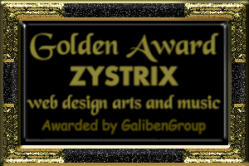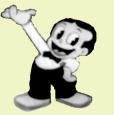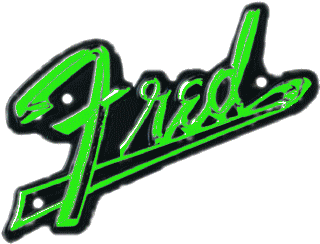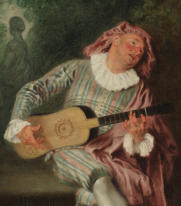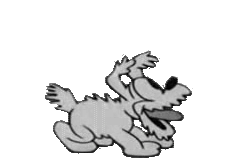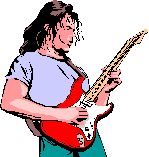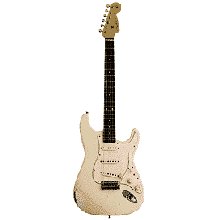
What’s new at Zystrix? Read on…
May 30, 2023
Before I go into the outer limits of
recording metal guitar and starting the
topic of recording a single rock guitar
there’s something I’d like to cover quickly. As if you didn’t know…
Soon It’s Summer
Here comes June 2023 and warmer weather (in the northern
hemisphere). Are you ready for summer? Well, if you’re not ready
the hour is getting late. Here it comes for all: graduations, cookouts,
fishing, outdoor music and entertainment, roller coasters, roller
skates, skateboards, bicycles, scooters, motorcycles, sun bathing,
sun burns, sun screen, long days, short nights, record heat index,
rising sea levels, heat stroke, air conditioners, lawn mowing, flowers,
gardening, pollen, blowing soap bubbles, campfires, corn on the
cob, iced tea, ice coffee, ice cream, frozen cocktails, cold beer, wine
coolers, flea markets, hammocks, porch swings, swing sets,
sunsets, camping, tennis, hiking, Frisbe toss, baseball, birds and
butterflies, swimming, water balloons, water sprinklers,
water parks, state parks, national parks, zoos,
traveling, sleeping with the windows open, lawn
mowing, yard work, yard sales, garage sales, insects
and insect repellents. Yeah, here it comes.
And now on with the show…
How to Record Metal Guitar
How to Record Rock Guitar
This Zystrix posting is the ninth of a several part
series designed to help a person record guitar,
specifically metal and rock guitar, no matter your skill
level. And the main crux is how to do an excellent
job on a low budget. Please know that there are
many types of gear that are glossed over or omitted
here because there’s just too much great gear to list.
Last time in part eight we covered recording metal guitar, Satan’s
Amp of Doom, recording once and hearing twice (track shifting),
and getting a great mix and sound for practically free. For a
refresher overview click on the arrow pointing left by the wrist watch
at the top of this page. To see all eight previous postings just keep
clicking on the arrow pointing left. The yellow megaphone always
brings you back to the newest page.
This time I’d like to continue with recording metal guitar -- the final
essentials -- then move on to the particulars of recording a single
guitar. That means we’ll be building Satan’s Amp of Doom once
again but with slightly different settings. For a refresher on how to
build Satan’s Amp of Doom please see the last episode by clicking
on the backwards wrist watch on the top left of this page. Do you
need to build Satan’s Amp of Doom for this? No, only if you want to
copy the sound of the recording examples listed below.
So make a sandwich, put on your reading glasses (if needed), grab
your thinking cap and smoking jacket, let the grass grow, take your
time, and kick back in your favorite chair and power lounge. Away
we go…
How to Record Killer Metal
and Rock Guitar
The Ultimate Guide
(Part Nine)
THE FINE PRINT: Zystrix is not and has never been a participant in any advertising program including
but not limited to the Amazon Services LLC Associates Program, Sweetwater, Reverb, or any other
affiliate advertising program designed to provide a means for sites to earn advertising fees from
readers by click-through advertising and linking to the aforementioned or any other companies. Zystrix
does not use Google Analytics, therefore this site is not required to have those annoying cookie
agreement popups. Zystrix has no links associated with the sale of any products, and we do not allow
this. This keeps our reviews honest, cuts out any unnecessary middle man, and keeps this website
free from cookies and the influences of Google and other unethical purveyors of your digital exhaust
and personal information. Open source. It’s our mantra.
The Story Continues…
The last time I don’t think I was clear with how to record the guitar was
recorded onto the DAW. For those interested the guitar went to only
one channel directly off the pickups. However, recording one channel
(or track) from the pickups and one channel (or track) from your pedal
board is a great method. That way you are capturing your personal
sound off the pedal board, and the sound options are greatly
increased. Is it an easier method? No. How are the sound options
increased? Well, now you have at least two sound options. Don’t
forget to run your pedal board through a clean amp and cab simulator
if it doesn’t offer those options.
Here’s a few extra helpful hints for recording metal guitar, but these
can also apply to just about any kind of guitar recording and not just
metal guitar.
Extra Pointers For Recording
Metal Guitar
01. New strings on a guitar are helpful but put them on the day before
so they have a chance to stretch and settle in. New strings aren’t
always necessary (especially with lots of distortion) but sometimes
they help with brightness and definition. To me new strings can be too
bright so I like them worn in for a day or so.
02. The competition is fierce and you and your band have got to
sound as together and pro as possible. And I’ve heard all the whiner
excuses about having to play to a metronome from “it kills the feel and
creativity” to “I can’t because the metronome keeps speeding down
and slowing up”. Really? Most metronomes are accurate to
hundredths of a second, so I think that’s called being disingenuous.
And if you are missing the feel then maybe you didn’t have the feel in
the first place. They are cheap enough, so go buy a metronome to
use while practicing. It gets a person used to following along, staying
on tempo, and giving your playing discipline. And it certainly makes
the job of editing the music easier on the DAW. And speaking of
that…
03. If your playing is so sloppy that every note has to be time
corrected I would suggest going home and practicing. Sitting at a
computer and time correcting notes all day isn’t much fun. Sometimes
creative license is OK for some motifs (like a solo that is more free
form) but sometimes it’s a drag on the overall sound. Know your parts
well enough so time correction is kept to a minimum. If you can play a
whole section in time (and in tune) as a complete chunk it’s a plus.
And speaking of that once again...
04. If you have to record in chunks (or even short phrases) that’s OK.
It gets the job done and makes the project sound more together. Oh,
and by the way, there are famous guitarists who do this too. However,
don’t rely on the DAW to bail out your inabilities. It’s not a crutch, but
I’ve seen musicians use it that way. It works I suppose, but it
increases the amount of time needed to finish the project. Most
people learn their parts in chunks and so recording in chunks just
makes sense. Of course, if you are a natural or just plain good (there
are people like that), recording the whole piece at a time is great too.
05. Here’s something I learned many decades ago
from my jazz band teacher, “As the time increments on
a metronome are decreased the ability to stay in the
groove improves”. What does this mean? Say the
tempo is 80 BPM. That’s slow for metal but not unheard
of in the grand scheme of music in general. The
metronome can be set to 80 BPM but it’s easier to
maintain 80 BPM if the metronome is set to 160 BPM. As the tempo
gets slower this method becomes even more valuable because it
breaks up a long measure into easily digestible parts. And if you tap
your foot twice as fast as the tempo you’ll stay “in the groove” better.
Another way to do this same trick is to have a drum machine or a MIDI
drum track in the DAW play something (cow bell, high hat, whatever
you like) in straight 8
th
or 16
th
notes. It’s also nice to have a snare or
bass drum or something like that play on one or at the beginning of the
measure so finding the start of the bar is obvious. Voila! Playing in
the groove on a slower tune (or even a faster tune) becomes instantly
easier.
06. And this last thing comes to mind. Continuity in sound is nice in
guitar (and most other things) so try to keep all your settings (volume,
tone, microphone placement, amp settings, and so on) uniform so the
tone and sound doesn't shift or change. Once the mixing begins the
settings can be changed into whatever you’d like via the DAW.
OK, we’re done with that. Let’s move on to recording a single guitar
(like in a trio situation) and making it sound as big as possible.
How to Record a Single
Rock (or Metal) Guitar
If a person listens to commercial recordings of bands with a single
guitar many of them use double tracking. That is, simply recording the
guitar track twice. This method is a lot like what we just learned the
last time with metal guitars. It makes sense in bands with two guitars.
I can’t say I like it in one-guitar bands – it’s not genuine -- but it is still
used a lot. Does your band really sound like that? I prefer guitars that
sound like reality, or at least as close as possible. It’s OK to sweeten,
but not cheat.
Some guitar players are loose enough in style that the double-tracking
method doesn’t work. Guitarists with a more blues and jazz based
style, among others, don’t really play something the same way twice.
They simply don’t play the same thing the same way. Well, there a
few things that can be done in this situation.
For the examples below we’re going back to using Satan’s Amp of
Doom for the guitar sound, but this time we’re going to change the
settings slightly. For a refresher on how to build Satan’s Amp of Doom
please see the last episode by clicking on the wrist watch that goes
backwards on the top left of this page.
Single Guitar Audio Examples
Guitar example 01.
In this audio file the guitar is recorded with a single Satan’s Amp of
Doom setup. This is our starting point. Although this is a stereo
recording the mono guitar is mixed to the center of the stereo field.
NOTE: Many single guitar recordings have the guitar panned slightly
to one side or the other. Click to hear guitar example 01.
Guitar example 02.
In this audio file the guitar is recorded with a double Satan’s Amp of
Doom setup (two tracks) and different IR guitar cabinets (four different
free Djammincabs Maxxx) used in this example. Both mono signals
are approximately the same volume and stacked on top of each other.
Both guitars are also played once using the cut and paste method
described in the last installment of this series (click here for the how-to
explanation and examples in Play Once and Hear Twice). NOTE:
This example only works if the guitarist plays very square with even
tempo. Click to hear guitar example 02.
Guitar example 03.
This audio example is the same as #02 above but with added brass
sounds panned far left and far right. The brass sounds are from the
free open source Surge XT synthesizer with Fat Brass on the right
side and Clean Trumpet on the left. NOTE: these synth sounds can
be whatever you choose and I chose these because they came close
to the original guitar sound and made it seem bigger. To accomplish
this the clean guitar signal is first run through an audio to MIDI
converter. I used the free tuner in Reaper and set it to output MIDI
and recorded this MIDI signal to a third and fourth track. However, I
have also had very good results with the free Mtuner by Melda
Productions – it also outputs a MIDI signal. NOTE: For superior
results try the free online Basic Pitch found at Spotify -- it does a
better job than either of the previous methods and even follows double
stops, chords, and solos. Click to hear guitar example 03.
Guitar example 04.
For a more dreamy, pleasant, curious, or haunted example try
changing the synth sounds from brass to pads. In this example I
decided on a haunted sound by combining Surge XT synthesizer
patches Burden and Dark Pulse. I mixed the effect up front to hear it
easier but it’s cool as a filler background sound in a band setting.
Click to hear guitar example 04.
Guitar example 05.
This is a 1980s single guitar type mix using reverb to widen
the sound. In this example I cut reverb lows and
accentuated the highs and panned the reverb hard left and
right. One guitar gets the reverb S Intimate patch from the
free epicVerb by Variety of Sound and the other guitar
gets the Brass Blatt patch from the Supermassive by
Valhalla. Click to hear guitar example 05.
Guitar example 06.
This example is the same as example #05 but the brass from example
#03 above is added for an even larger single guitar sound. Click to
hear guitar example 06.
Guitar example 07.
In this example a more traditional 1980s single guitar mix is used. The
clean guitar (pickup signal) is run through a ping-pong delay and
recorded. This stereo delay track is then split into two mono tracks
with the signals panned hard left and right. Satan’s Amp of Doom is
then used on both tracks with two Djammincabs Maxxx on each guitar
(left = cab 389 and 593) (right = cab 799 and 600). I chose IR cabs
with a dull sound to simulate distance and mixed them behind the
middle guitar. A free stereo reverb called Room Reverb by Elephant
DSP was then applied to the guitar bus using patch Medium Room –
Wooden. I added upper frequencies to bring the guitar forward. Click
to hear guitar example 07.
Guitar example 08.
Another interesting way to do example #4, #6, or #7 is to set the
audio-to-MIDI to the same key (use the note selection option to fit the
key) but have it follow loosely so it follows in a more random fashion.
Now choose a complimentary backing pad for the random-ish MIDI. In
this example I used a weird free Surge synth patch called Aliens and
the Supermassive Reverb by Valhalla set to Boards of AFX to fit the
mood. Click to hear guitar example 08.
Guitar example 09.
This is a cheaper (free) rendition of a 1990s style of guitar mix. A
doubler is used for the middle guitar while still using the example #7
ping-pong guitars panned left and right. The same reverb is used as
in example #7 for the guitar bus but the room width is expanded to
maximum. Click to hear guitar example 09.
Guitar example 10.
In this single guitar example a free plug-in called Double Tracker by
Vtar Amps is used. Theis effect is similar to a pedal called Mimiq by
TC Electronics. The sound is quite good but the problem with this
type of effect (and most others like this) is the sound becomes chorus-
like when summed to mono. Although most people don’t listen to
music in mono, this is something to consider for your project. Click to
hear guitar example 10.
Guitar example 11.
Here is the same example as #10 but with the addition of the ping-
pong guitars found in example #7. Although it doesn’t get rid of the
chorus-like problem completely, it helps to reduce the effect when
summed to mono. Click to hear guitar example 11.
Guitar example 12. Full Band
And last but not least -- I suppose it wouldn’t be right to omit hearing
the results in a band context. This example begins with the Double
Tracker by Vtar Amps on only one amplifier and a second with two
different free cabinet Djammincabs Maxxx IRs. The guitar lick (the
same lick as all the other examples) is played using track shifting as
heard in example #2. After the short piano solo (free Piano One) the
guitar solo goes back to the Double Tracker by Vtar Amps for the
rest of the tune. The synthesizer fill used for the staccato band ending
is the free WhispAir by Full Bucket set on the pad patch called
Texture and this is run through the Valhalla Space Modulator patch
called VeriEcho and then the Valhalla SuperMassive Reverb patch
called Synth Wider. During this and for the tail end is an old movie
voice (The Ninth Guest) mixed with some sound effects I put together.
The instrumentation and mix bus effects are the same free effects as
used in the example called Band in the Hear The Results from the
last installment called Play Once and Hear Twice. Click here or on
the backwards watch up above to read the complete free equipment
list. Click to hear guitar example 12 Full Band.
Don’t touch that dial…
Stay tuned next time…
Congratulations. You made it to the end of this section. As you may
know there are two main camps or schools of thought for the studio
techniques of recording heavy guitar. And this time it was about
recording single metal or rock guitars. Next time is the last in this
series. Is it over already? Almost. Then we’ll cover old tricks,
modern and popular tricks, and maybe a few you never tried. And
then it’s officially over, and we’ll be in the middle of the year. Maybe
I’ll see you next time.
Friends don’t care if your house is clean.
They just bring beer and
new music.
Knowledge, art, and
music for all…

Zystrix = a source, shaman, or library disseminating secret or lost knowledge, art, or music.











ZYSTRIX
POPULAR FREE DOWNLOADS
Introducing
the
next
generation
in
guitar
cabinet
impulse
responses.
Try
the
new
Djammincabs
Maxxx
4x12.
All
of
these
cab
IR
files
are
based
on
old,
new,
and
boutique
4x12
cab
curves.
All
are
recorded
in
beautiful
24-bit
48K
mono
and
will
work
on
most
free
and
paid
digital
convolvers.
Hear
the
guitar
IR
breathe
fire
with
pure
attitude.
Don’t
be
suckered
in
with
high-dollar
sales
pitches,
there
ain’t
no
guitar
IR
downloads
better
than
these.
Choose
from
many
cab
sound
recording
styles:
cone,
edge,
angled,
arm
away,
inside
cab,
back
of
cab,
or
back
of
room.
Djammincabs
is
the
world
leader
in
guitar
cab
IR
invention
--
no
other
guitar
IR
company
can
imitate
these.
Djammincabs
Maxxx
4x12
makes
it
easier
for
you
to
design
your
own
personalized
sound
--
even
your
own
Metal
IR
pack.
If
you
can’t
find
a
cabinet
or
combination
you
like
here,
then
you
don’t
like
4x12
cabinets.
This
guitar
IR
download
also
includes
a
Tactical
Munitions
Manual
with
suggested
uses
and
detailed
cab
combinations.
This
is
the
best
free
guitar
impulse
download available anywhere.
Djammincabs Maxxx 4x12
“Murder Your Competition.”
I feel brave. I want to try them now. Here’s my email...
Djammincabs for Guitar
Download Free Guitar Impulse Responses
Click here to download
over 200 Free Guitar Cabinet Impulse Responses.
Djammincabs for Bass Guitar
Download Free Bass Impulse Responses
Click here to download
over 200 Free Bass Guitar Cabinet Impulse Responses.
Best Free Guitar Impulses.
The Top 11 Best Free
Guitar and Bass
Cabinet Impulse Responses for 2022
(in alphabetical order…)
Find, download, and test the best
free guitar cabinet impulse responses for 2022.
FREE BASS LOOPS SAMPLES DOWNLOAD
ROYALTY FREE BASS LOOP SAMPLES
FREE BASS LOOPS
Over 200 samples are included in the collection
Download the complete collection of 24-bit bass loops here.
NOTE: This download size is approximately 369 Megs.
Free Pendulate Synthesizer Presets
Original Newfangled Audio Pendulate
synth patches/presets
Click here to download over 240
Free Pendulate Synth Presets (patches)
Synapse Audio
Dune Synthesizer
Download Over 200 Free
Synapse Audio
Dune 2 and Dune 3
Synthesizer Patches and Presets
Click here to download over 200 FREE Synapse Audio
Dune 2 or Dune 3 synthesizer patches or presets.
NOTE: This synth patch download is slightly over 1 Meg in size.
Free Reverb Impulse Responses
Choose from hundreds available in
48K 24 bit WAV format
including new original reverbs.
CabSpace
Over 400 Guitar Isolation Booth Reverbs
Download over 400 Free Zystrix Original Reverb Impulse Responses,
and over 200 Free Zystrix Original BONUS Reverb Impulse Responses.
Download all the Alesis MIDIVerb 4 reverb impulse responses.
Download all the Lexicon MPX-1 reverb impulse responses.
Download all the Alesis Wedge reverb impulse responses.
Download over 50 Reverb Relics from the past.
Click here to download free reverb impulse responses.
Free Drum Samples
Only Available from Zystrix
Free Gong Samples and Sounds
Free Snare Drum Samples and Sounds
Free Bass Drum Samples and Sounds
Free Oriental Cymbal Samples and Sounds
Free Oriental Bells Samples and Sounds
The Ultimate Original Drum Sounds List
Download over 2000 original slammin’ rock bass drums.
Download original Gongs, Cymbals, Broken Cymbals, and Bells.
Download Over 200 Free Original Bass Drum Sounds and Samples.
Download over 200 Original Free snare drum sounds.
Click here to download Drum Kit Sounds.
Dangerous Neighbors
The SW Michigan Power Trio.
Free Rockin’ Music Downloads
The
music
for
the
next
book
will
be
out
in
2023.
Production
is
a
little
behind
but
there’s
a
sneak
peek
demo
of
how
it’s
supposed
to
go
for
the
first
tune
on
the
album.
This
tune
is
called
Sting
of
Death
and
it’s
the
backing
music
for
the
first
chapter.
Click here to download recent Dangerous Neighbors.
Download
tunes
from
the
80s
to
today.
Use
the
special
codes
on
the
Embalmed
for
Life
page
(see
the
DOWNLOAD
FREE
AUDIO
BOOKS
link
below)
and
get
free downloads for the complete album and the free horror audio book
The Fluid - Embalmed for Life.
Click here to download various music from Dangerous Neighbors.
Download Free Synth Samples for
Intros, Interludes, and Endings
Listen to example #01 by clicking here (MP3 Sample)
Download FREE professional quality stereo sample packs that slowly
evolve over time. All samples are in 48K 24 bit WAV format and are
about 20 seconds long or more. If you like suspense, psycho, outer
space, or terror then this collection is for you. These range from
paranoia to sci-fi, cinematic gore to strange industrial horror, and creepy
creatures to insane laboratories.
Click here to download all the synth Intros, Interludes, and Endings.
DOWNLOAD FREE
AUDIO BOOKS
The Fluid, Embalmed for Life
There are Free Audio Book codes for Audible downloads (must sign up).
There are also free sample downloads of the book reading.
There are free downloads of music samples.
There is a free “Look Inside” download of the paperback.
There is a free glossary of the largest list of mortuary slang in the world.
The Free Dangerous Neighbors Album The Fluid, Embalmed for Life comes
included as part of the audio book and parts are available here as a free
download.
The paperback book is available for sale at Amazon dot com. I have no control
over these sales; because of the Amazon agreement I cannot offer complete
paperback or complete audio books here. I’m sorry for any inconvenience.
Click here for free audio books,
book reading samples, music samples, etc.
NEW RULES NOTICE -- What Zystrix does with your download information…
Take me back to the top of the page.




















